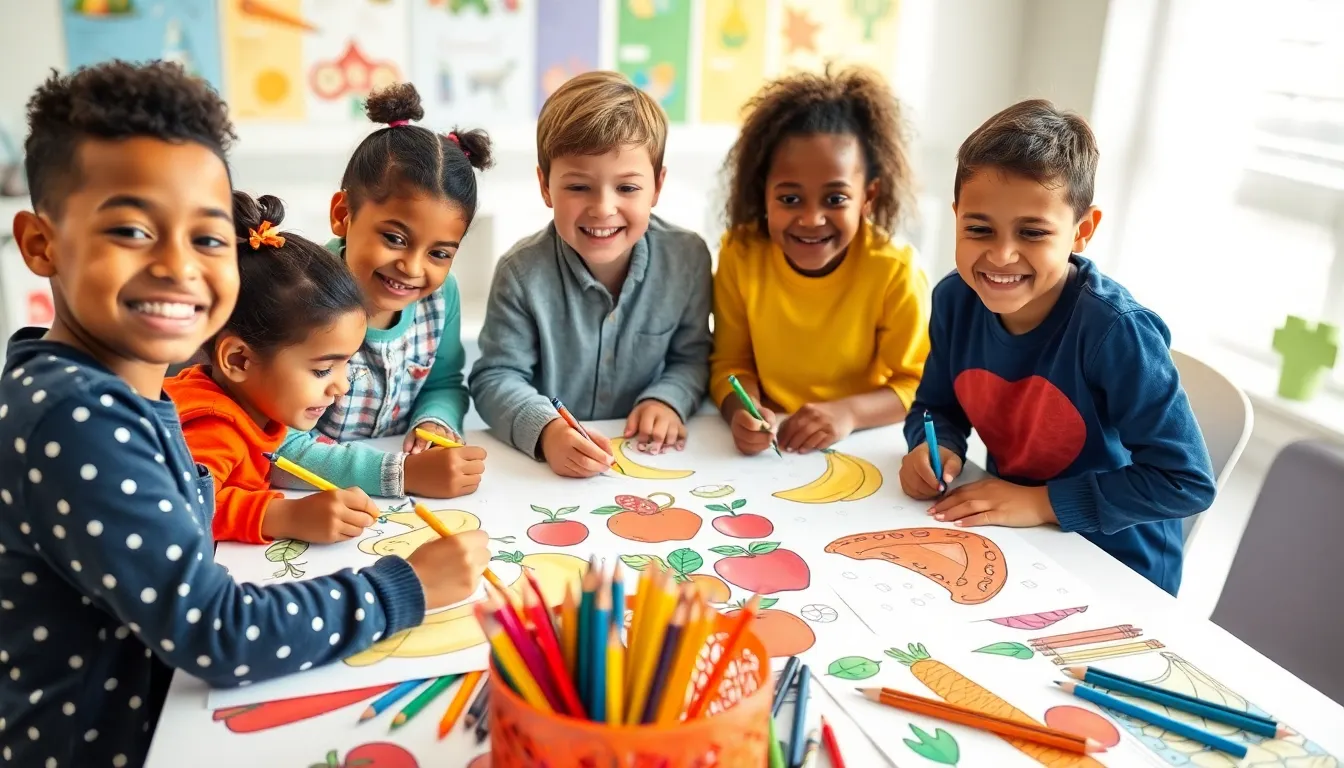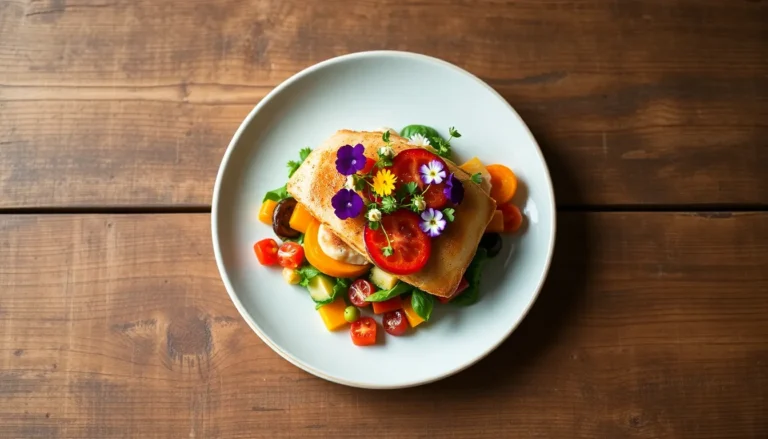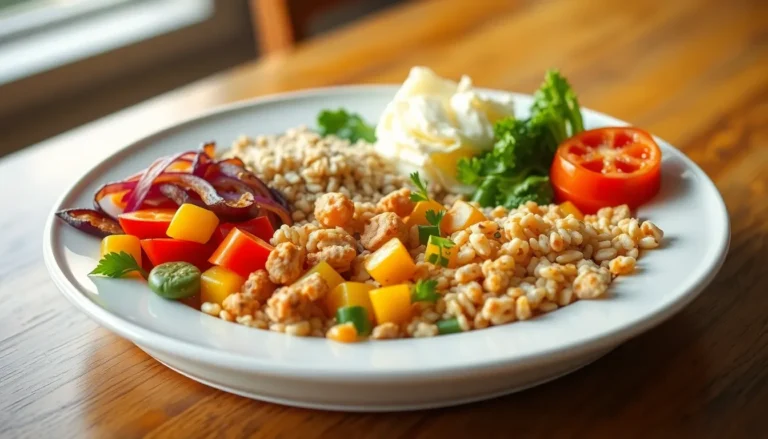Coloring isn’t just for kids anymore. Nutrition coloring pages offer a fun and engaging way to learn about healthy eating while unleashing creativity. Imagine a world where broccoli is a superhero and carrots wear capes—sounds like a dream, right? With these whimsical pages, kids can color their way to better nutrition knowledge, making veggies less scary and more exciting.
Table of Contents
ToggleWhat Are Nutrition Coloring Pages?
Nutrition coloring pages represent a creative tool designed to teach children about healthy eating habits. These pages feature engaging illustrations of fruits, vegetables, and nutritious foods, often depicted in imaginative settings.
Benefits of Using Nutrition Coloring Pages
Using nutrition coloring pages promotes healthy eating awareness among children. They foster an understanding of various food groups, encouraging kids to explore their nutritional value. Engaging with these pages can enhance motor skills as children color, cut, or paste items. Parents appreciate the opportunity to discuss healthy choices during coloring sessions. Such interactions help reinforce positive habits in a fun and low-pressure environment.
Engaging Children with Interactive Learning
Interactive learning captivates children’s attention better than traditional methods. Nutrition coloring pages allow kids to express their creativity while learning about healthy foods. Crafting stories around the pictures can spark imagination and interest in nutrition. Educators find these pages beneficial for group activities, promoting teamwork and social skills. Kids often share their thoughts on favorite foods, enhancing communication skills within a fun context.
Types of Nutrition Coloring Pages

Nutrition coloring pages come in various types, each targeting specific aspects of healthy eating. These pages creatively engage children while promoting nutritional knowledge.
Fruits and Vegetables
Fruits and vegetables coloring pages showcase colorful illustrations of popular produce. Kids can color apples, bananas, carrots, and broccoli in vibrant shades. By coloring these pages, children learn about the importance of fruits and vegetables in their diet. Engaging with these images highlights the health benefits associated with eating produce. It promotes recognition of different fruits and vegetables, making them more familiar and appealing to young ones.
Food Groups and MyPlate
Food groups and MyPlate coloring pages focus on educating children about balanced diets. These illustrations represent various food categories, including grains, proteins, and dairy. Children can color a balanced plate, visualizing the proportions of each food group. Understanding MyPlate encourages kids to make healthier meal choices. Engaging with these pages fosters discussions about diet diversity in an interactive way, leading to better dietary habits.
How to Use Nutrition Coloring Pages
Nutrition coloring pages serve as effective tools for teaching children about healthy eating in various settings. Utilizing these pages encourages engagement with nutritious foods while also promoting creativity.
In the Classroom
In the classroom, instructors can incorporate nutrition coloring pages into lesson plans to enhance learning. Students can work individually or in groups, allowing collaboration and teamwork. Teachers can initiate discussions about food groups while students color, integrating important nutritional information. Using these pages also supports motor skills development, making them an ideal addition to art or health classes. Incorporation of colorful illustrations captures students’ attention and makes learning enjoyable.
At Home
At home, parents can use nutrition coloring pages as bonding activities with their children. Families can spend quality time together discussing healthy eating habits while coloring imaginative depictions of fruits and vegetables. Parents can explain the benefits of various foods as their children color, reinforcing nutritional knowledge in a relaxed environment. Engaging in this creative process helps children develop a positive relationship with healthy foods. This approach transforms mealtime discussions into enjoyable experiences that foster better dietary choices.
Creating Your Own Nutrition Coloring Pages
Creating nutrition coloring pages engages creativity and learning about healthy choices. Custom designs can enhance children’s understanding of nutrition while making the experience fun.
Design Tips and Ideas
Start with vibrant illustrations of fruits and vegetables. Include elements like smiling faces to make the images more appealing. Use simple shapes to ensure young children can color easily. Incorporate interactive features, such as word searches or fun facts about each food item. Adding a space for children to draw their favorite meals promotes imagination. Test different themes like superheroes or animals to capture interest. Tailor the complexity of designs to match age groups, ensuring all children can enjoy the activity.
Resources for Printable Pages
Several websites provide free printable nutrition coloring pages. Explore educational resources like the USDA’s MyPlate and other nutrition-focused organizations. Downloadable content can be easily printed at home for convenience. Charity organizations often offer themed coloring pages that promote healthy eating. Look for platforms that focus on early childhood education for kid-friendly designs. Review community resources or local libraries that may have printouts available. Incorporating online templates can save time and offer diverse options for creative learning experiences.
Nutrition coloring pages offer a unique and engaging way for children to learn about healthy eating. By transforming vegetables and fruits into fun characters, these pages make healthy foods more appealing. They not only enhance creativity but also promote discussions about nutrition in a relaxed environment.
Whether at home or in the classroom, nutrition coloring pages can turn learning into an enjoyable experience. They encourage teamwork and communication while helping children develop a positive relationship with healthy foods. With various designs available, parents and educators can easily access resources that support healthier dietary choices. Embracing these creative tools can lead to lasting benefits in children’s eating habits and overall well-being.





